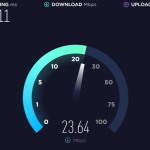
A key aspect of cloud security is data security. This involves the technical side of threat prevention, such as tools and technologies that allow clients and providers to restrict access to sensitive data. One of the most powerful tools is encryption, which scrambles data so that only those with the proper encryption keys can read it. If these keys are lost, data is rendered meaningless. Another important feature of cloud networks is virtual private networks, which protect information from malicious insiders.
Cloud service providers should separate business-critical resources from non-business-critical resources. They should also isolate virtual network resources in logically isolated sections. For example, subnets can be used to microsegment workloads and enforce security policies. Additionally, dedicated WAN links can be used to provide secure access to virtual devices. Cloud security vendors can help with these efforts by providing robust Cloud Security Posture Management, which automatically applies governance and compliance rules to virtual servers. It can also audit any configuration deviations and remediate them automatically.
Data encryption should be a top priority. The best practices for this include strong passwords, encryption at rest and in use, and two-factor authentication. In addition, data should be encrypted at rest and in motion to minimize the risk of ransomware attacks. Furthermore, data backups should be isolated and protected by encryption. In addition, continuous user activity monitoring and security monitoring should be implemented across all environments and instances.
Cloud providers must adhere to laws and regulations concerning data storage and usage. Many US laws, including the Payment Card Industry Data Security Standard, the Health Insurance Portability and Accountability Act, the Sarbanes-Oxley Act, and the Federal Information Security Management Act of 2002, require providers to implement strong access controls and to regularly report security incidents. These laws and regulations can put your data at risk, so it is important to choose a cloud provider that complies with these laws and regulations.
Many cloud applications contain default or embedded credentials, which can pose a risk to your data. As with any kind of privileged information, attackers can guess these default credentials. Organizations must manage the security of these credentials as if they were privileged credentials. Another common problem is that many IT tools are designed for on-premise environments and may not be compatible with the cloud. These incompatibilities can result in control gaps and visibility gaps. As a result, organizations can become vulnerable to misconfigurations, data breaches, and data privacy issues.
Cloud security can be achieved by understanding who is responsible for what. Several types of cloud providers have a shared responsibility model, which outlines who is responsible for the security of their data. It is also important to consider that the security of your data varies by cloud provider. For example, if you are a customer of a platform-as-a-service, you are responsible for securing your own data, while a public cloud provider may be responsible for securing your data and virtual network traffic.









